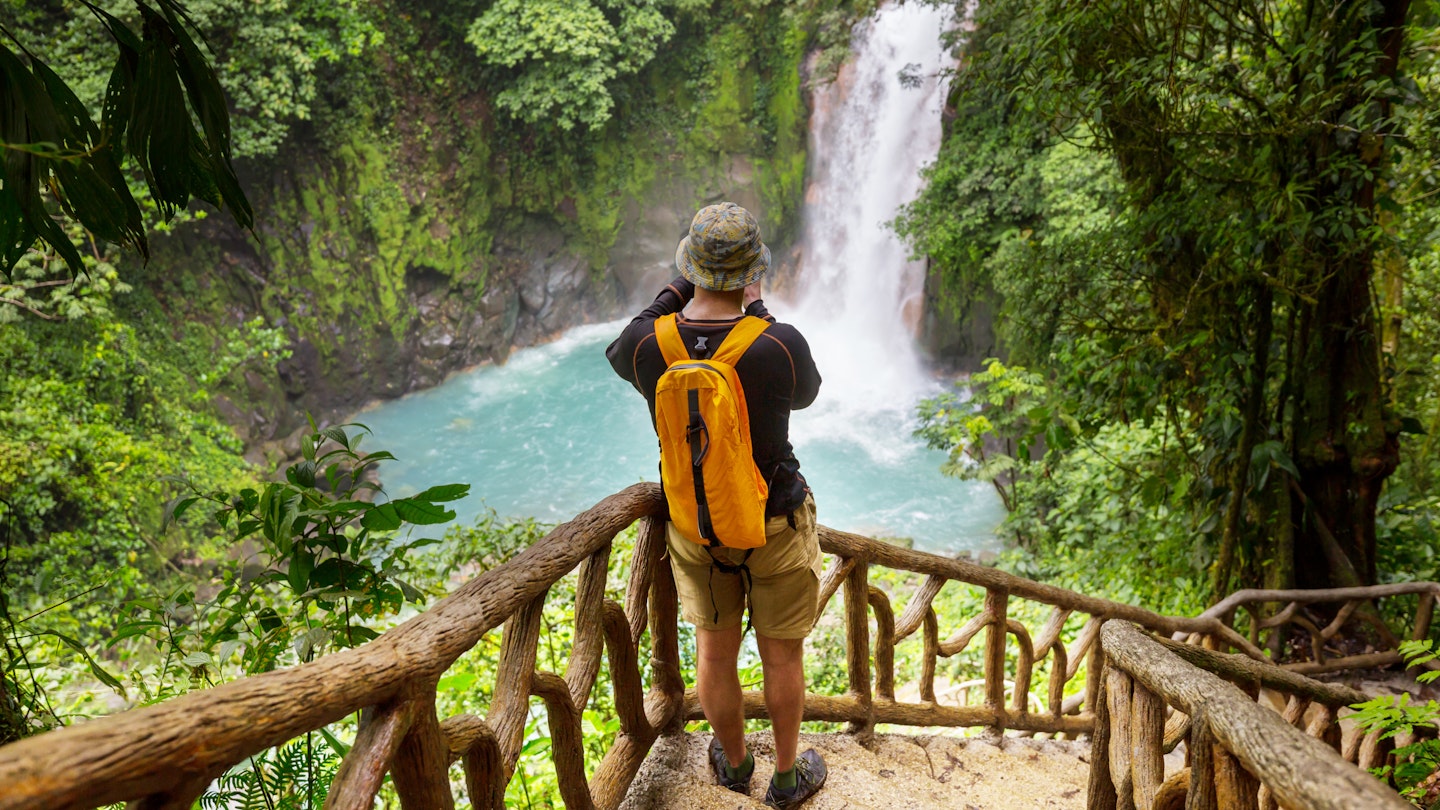Adrenaline-pumping activities, pristine beaches, untamed forests, show-stopping wildlife, and a culture of welcoming visitors all serve to make Costa Rica an irresistible destination for adventurous travelers.
In 2019, Costa Rica received the Champions of the Earth award, the United Nation’s highest environmental honor – high praise indeed!
You’ll hear the term “pura vida” – literally, “pure life” – everywhere you go in Costa Rica. More than just a phrase, it’s a philosophy of living in the moment, finding joy in simple things, and respecting nature. Most visitors quickly fall in love with the Ticos’ unhurried way of life.
However, how safe is travel in Costa Rica? What do you need to pack, and what should you know about local etiquette? Here’s our guide to the most important considerations before your journey.
1. How Much Time Do I Need in Costa Rica?
You could spend weeks in Costa Rica without running out of things to do; however, you can also fit a lot into a week if time is limited. If you’re traveling from the US, shorter trips, even a long weekend, are feasible.
Remember, although the country appears small, getting around will take longer than expected. If you’re short on time, head to either La Fortuna, known for the Arenal volcano, or the lush forests of Monteverde. For beach relaxation, consider flying into Liberia, which is close to the stunning beaches of the Pacific Coast.
- Combine surf and jungle adventures on the Pacific shore in one week.
- If time allows, explore the biodiverse Osa Peninsula or the wild beaches along the Caribbean coast.
2. Dress for Variable Weather
Costa Rica has two main seasons. The dry season runs from December to March, with temperatures reaching around 35°C (95°F). The rainy season lasts from May to November, with September and October being the wettest months. However, Costa Rica’s multitude of microclimates introduces variability.
Therefore, in addition to T-shirts, shorts, and flip-flops, pack a raincoat and a warm jacket, waterproof hiking boots, closed-toe sandals, and lightweight quick-dry clothing. Rain can occur unexpectedly, so a waterproof bag is invaluable for protecting your belongings. Don’t forget high-factor sunscreen and bug spray, which will be more affordable at home.
3. Plan Ahead for Peak Travel Times
Prepare by booking accommodations early if you visit during peak times such as Christmas, New Year, Easter, or US spring break. Prices typically rise during these periods, and it’s wise to secure spots at popular restaurants and tours ahead of time to ensure availability.
4. Carry a Mixture of Currency
The colón is Costa Rica’s official currency, but US dollars are widely accepted. It is advisable to carry a mixture of both, along with small bills for tipping and purchases at local shops and eateries. Credit and debit cards are commonly accepted for larger expenses.
5. Tipping Practices
Tipping is appreciated but not mandatory in Costa Rica. Aim for around 10% of the tour price for guides and drivers, or more for exceptional service. While restaurants add a 10% service charge and a 13% sales tax to your bill, it’s customary to give an additional tip if the waiter provides exceptional service.
6. Basic Language Skills Can Be Helpful
English is widely spoken in Costa Rica, but knowing some Spanish can enhance your experience. A few polite phrases can elicit warm smiles from locals, so consider adding greetings like buenos días (good morning), por favor (please), and gracias (thank you) to your lexicon. Additionally, the phrase pura vida is versatile and widely understood.
7. Respect Nature
Costa Rica is noted for its rich biodiversity, housing approximately 5% of the world’s species. Conservation is a priority, with 28% of the land protected. Travelers can contribute by choosing sustainable accommodations, traveling with ethical guides, and eating local produce. Always maintain distance from wild animals and opt for views through binoculars or a zoom lens.
8. Safety Precautions
Costa Rica is generally considered safe, but petty crime can occur. Exercise caution and avoid showcasing expensive items. It’s wise to carry passports separately, use ATMs in bank locations, and remain vigilant in crowded areas. If visiting bars or clubs, never leave drinks unattended.
9. Avoid Climbing Arenal Volcano
Although Arenal Volcano was once active, it is now in a resting phase. Climbing the volcano is illegal without a permit, so resist the temptation. Instead, enjoy hiking on various trails around the base, partake in mountain biking, horseback riding, and relax in nearby hot springs.
10. Stay Healthy and Avoid Insect Bites
Costa Rica boasts a high-quality healthcare system, but always ensure you have travel insurance for medical coverage. While malaria is rare, mosquitoes can carry diseases such as dengue and Zika. Use insect repellents containing at least 20% DEET and cover bare skin during evenings to minimize bug bites.
11. Surfing Safety
Costa Rica offers excellent surfing opportunities, particularly along the Pacific Coast. Nevertheless, be cautious of rip currents, and always pay attention to warning flags. Always surf with a buddy and remain aware of your surroundings regarding local wildlife, especially crocodiles near rivers and lagoons.
12. Road Safety Tips
Driving in Costa Rica provides freedom, but consider a few safety tips. Ensure you have comprehensive insurance and rent a 4WD if venturing onto dirt roads. Always drive slowly and defensively, and avoid leaving valuables in your car. Planning your route to avoid night travel can enhance safety during road trips.
13. Hydration is Key
It’s crucial to stay hydrated in Costa Rica’s warm climate. While tap water is generally safe to drink, consider using a water filter bottle in more remote rural areas to stay healthy and conserve the environment.
By following these tips and respecting the natural beauty around you, your trip to Costa Rica is bound to be unforgettable!





